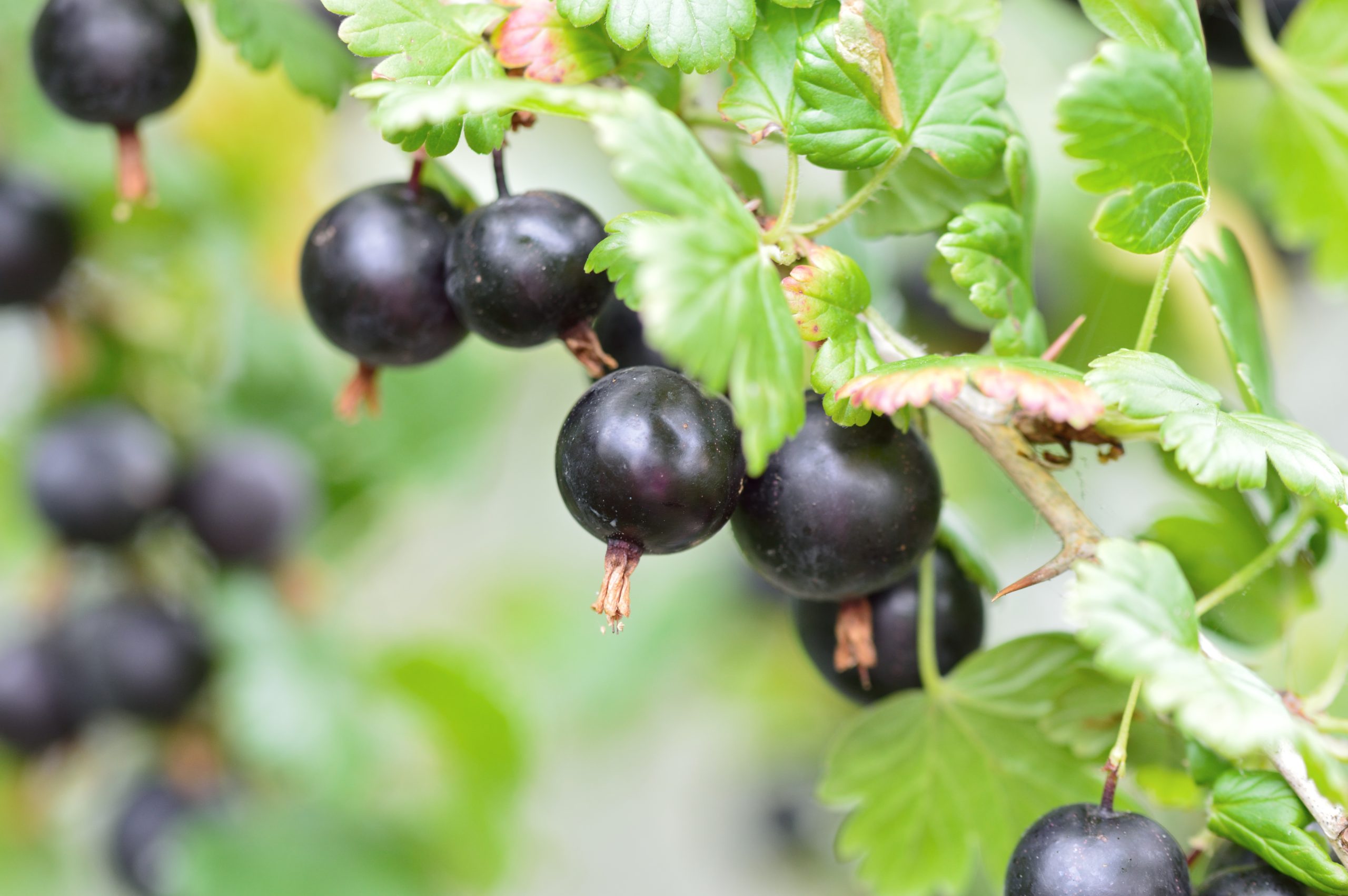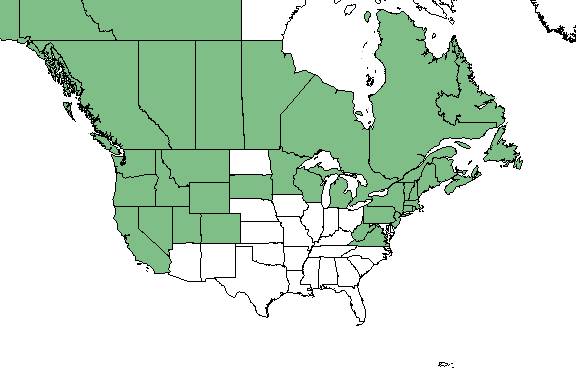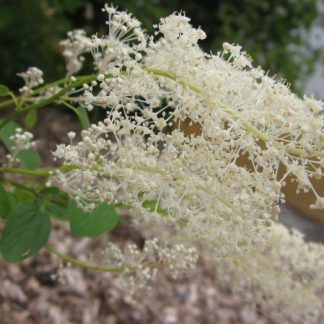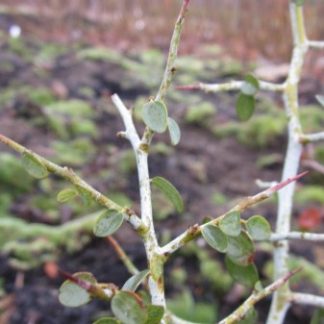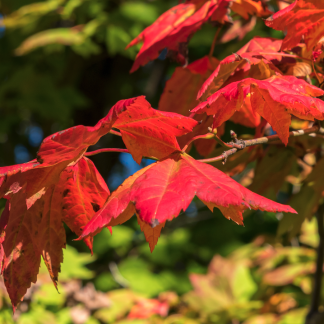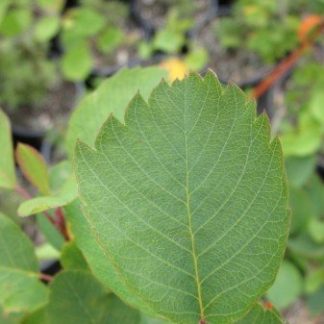Ribes lacustre
black gooseberry
Habit: black gooseberry is a tall, erect to prostrate shrub with maple-like leaves and reddish-brown stems. Branches are thickly covered with sharp, slender prickles and the leaf nodes and branch bases bear larger, thicker spines. The plant produces smooth leaves, deeply divided into 3-7 lobes; leaf margins are serrated. From mid spring to mid summer, clusters of 5-15 glandular flowers droop from the branches; they bear a saucer-shaped calyx and broad, pink to purple petals. Dark brown, bristly edible berries follow the flowers.
Ecology: this species is found in a variety of habitats, from moist forests and clearings to dry stream-banks and forested slopes of subalpine ridges. It typically grows on rotten wood. Ribes lacustre is widespread in North America, it can be found on both sides of the Cascades, from Alaska to California and east to the Great Lakes and Atlantic coast.
Growing conditions: full sun to partial shade or dappled light, in moist to moderately dry soil. This prickly shrub makes an excellent barrier hedge. Its fruits are very bland, but will provide abundant food for birds that make their nest in the thorny cover of the plant.
Northwestern native tribes used black gooseberry both as a food source and as medicine. They boiled the berries to make a tea to cure colds and diarrhea. The spines of Ribes lacustre are said to cause allergic reactions to some people.
Specs
Deciduous shrub
3-5 feet (1-1.5 m)
2-5 feet (0.6-1.5 m)
4-8

